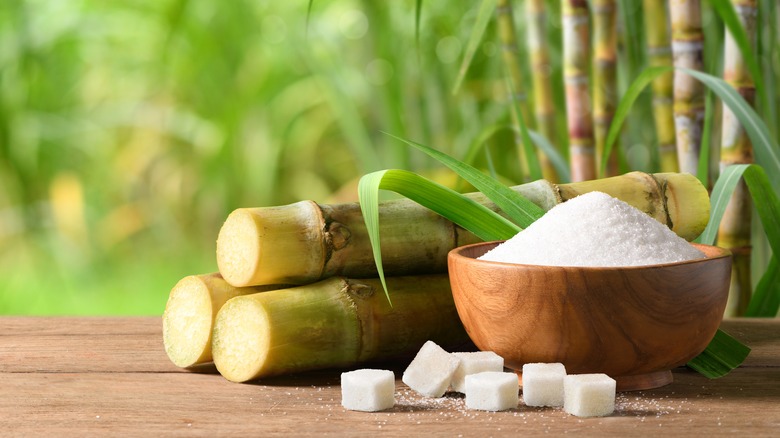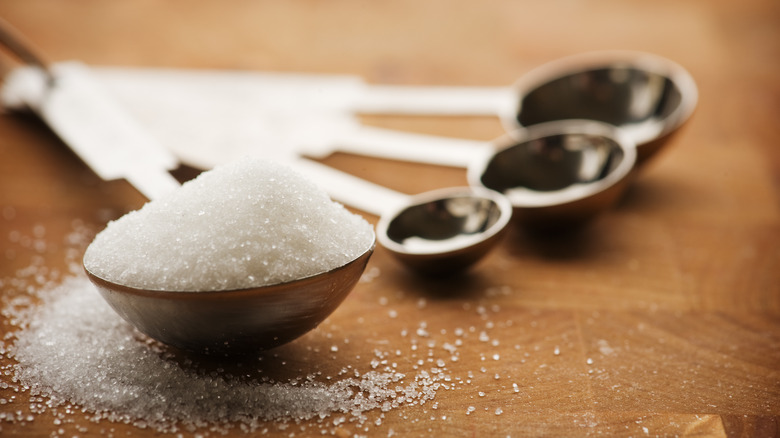Sweet Proteins Vs Sugar: What's The Difference?
We live in the greatest age of scientific advancement in human history. Food is most certainly a part of this trend; in addition to things like molecular gastronomy and lab-grown, plant-based meat, many common foods we eat contain laboratory concoctions. But often, the scientific advances in food don't necessarily come from a lab environment, but from harnessing the power of the natural world itself. A great example is the rise of sweet proteins.
Sugar is a huge part of the human diet, and it's easy to understand why — sugar is delicious. But a lot of people, for various reasons, would like to cut down their personal sugar intake. You can use artificial sweeteners for this, of course, but let's be real: None of them taste great, and they pretty much all have some sort of chemical-esque flavor. But as noted, sweet proteins aren't created in a lab; they're actually a product of plants that have evolved to mimic the taste of sugar without actually being sugar. Though sugar and sweet proteins taste the same, they're otherwise completely different.
Sweet proteins come from nature, but we produce them artificially
The most important thing to understand is that sweet proteins are proteins with amino acids attached to them. Certain plants have evolved to produce sweet substances in order to encourage seed dispersal from humans and animals, and the end result is substances that mimic sugar without actually recreating its chemical compounds. From a biological perspective, they activate the same receptors on the tongue as does sugar. On a molecular basis, sweet proteins are actually thousands of times sweeter than sugar — but they're also much, much harder to get in significant amounts.
The problem is, we can't just harvest them. The particular plants that produce them grow in delicate ecosystems (mostly in West Africa), and adapting environments to grow them elsewhere isn't cost-efficient. We can, however, grow them through precision fermentation. Essentially, sweet protein genes are added to yeast, which is then added into a tank filled with nutrient-rich broth. The yeast consumes the sugars in the broth, producing sweet proteins. It's similar to the fermentation process used to create beer.
Sweet proteins dodge the health concerns of sugar
While the health risks of sugar can be overstated, they certainly do exist. Eating too much of any food can lead to issues (just look at excess fish consumption and mercury poisoning), and sugar is no exception. The CDC states that health complications like type 2 diabetes and heart disease are a worry with high-sugar diets. Moreover, those who already have diabetes have to carefully watch their blood sugar. Sweet proteins are designed to decrease health concerns while still providing people with the sweet foods they enjoy.
When used in foods either in place of or in addition to sugar, sweet proteins can reduce that food's sugar content by up to 90%. This is great news for diabetics, who can eat foods with sweet proteins much more freely than with comparable amounts of sugar, without having to worry about going into insulin shock. Although only one company, Oobli, currently has FDA regulatory approval to use them, the possibilities here are vast. There's a good chance that within the next two decades, sweet proteins will revolutionize the way we eat food.


